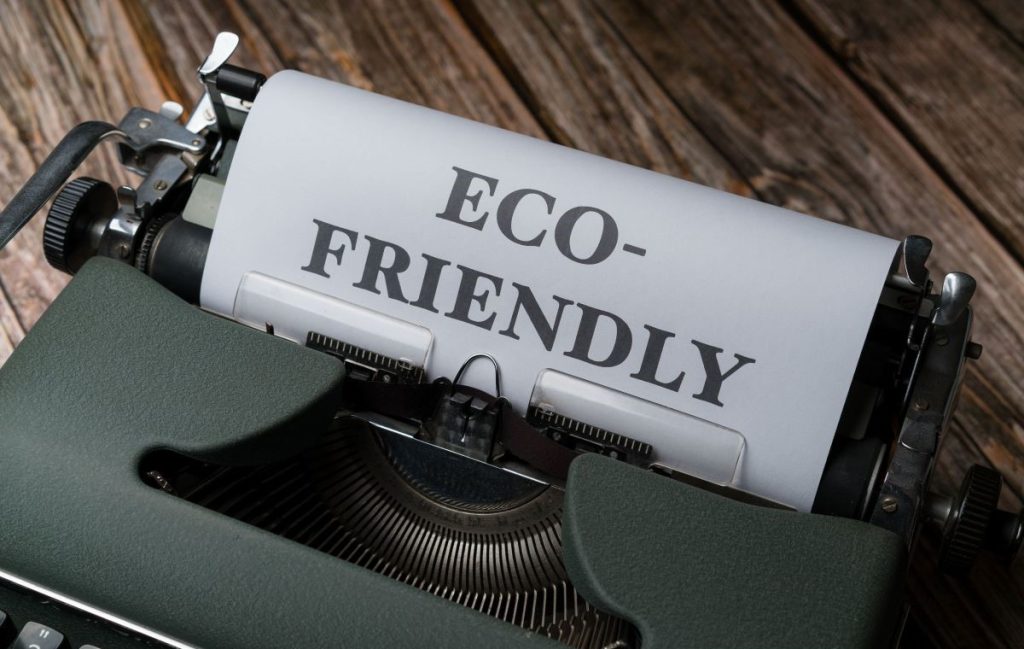Greenwashing is a common problem with many businesses today. Companies know that consumers are looking for eco-friendly and sustainable businesses, so they’re naturally keen to include themselves in that category. Unfortunately, many of them are just paying lip service and aren’t really going to the efforts you might expect to deliver on their promises. So, if so many businesses and brands are engaging in this practice, how exactly are you meant to identify the ones you can trust on their word? It’s not always easy to separate the good from the bad, but there are methods you can use to seek out the best brands and products.
This article contains affiliate links and does not earn commission.

Look at Their Product Design and Packaging
The first thing many people will do if they want to know whether a company is actually sustainable is to take a look at the products they make and how they package them. Both of are important because there’s no point in having a product that’s made using green materials and methods if the packaging is going to let it down. Take a look at the medicine packaging company Jones Healthcare Group, which is continually researching and producing more sustainable packaging. Check that the company is making sincere efforts not only to produce sustainable products but also to continue improving and finding eco-friendly methods of distribution.
Read Their Sustainability Policy
A clear sustainability policy can really help you when you’re researching a company. Of course, this should go beyond just saying what the company’s mission is or what its goals are. While it’s great to set goals, what’s important is what they’re actually doing to meet those objectives. You want the brand’s policy on sustainability to outline the actions they’re taking to make their work as sustainable as possible. Think about what sort of things you want to see. Helping to plant trees might be a nice gesture, for example, but is it the kind of direct action you want them to take?
Check Their Certifications and Partnerships
Teaming up with green organizations is definitely not a guarantee that a company is making genuine efforts to be sustainable. However, it can be a good sign, particularly for organizations that have strict requirements for the companies they partner with. These types of partnerships and certifications should be displayed somewhere that’s easy to see on the company’s website. It might be information you can find in the footer of their site or as part of their sustainability policy. The most important thing is to actually check out the programs and organizations they have listed. Are they worth their salt or is it just name-dropping?
Get a Third-Party Opinion
Trawling through all the information you can find about a company can be pretty exhausting. Having to do it for every potential brand you engage with can quickly make you give up. Who has time for that? Some people might be fine with it, or even enjoy it, but if it’s not for you, there is a quicker way. Just get someone else to do it. There are a number of independent rating and review systems that will take a deep dive into a company for you, assessing its sustainability so that you don’t have to. Try options like EcoVadis and Good On You, which closely assess brands and aim to determine how sustainable and ethical they are.
It can sometimes be useful to see if a company has an ESG (environmental, social, and governance) score. This score is designed to assess how sustainable a company is, as well as its ethical performance. It’s often used by investors to help them make better decisions but can be useful for customers too. However, there are some potential issues with relying on this score. There is no standardization of how the score is reached, with a number of different systems used. That means that these scores can be just as subjective as the company’s own words about their sustainability.

Focus on What They’ve Done
One of the best ways you can pick a company that is making genuine efforts to be sustainable is to focus more on what they have already done than on what they promise they’re doing or will do. It’s all very well if they talk a big talk, but if it’s yet to be seen if they will actually walk the walk, it’s not actually much use. So try to look at the things they have confirmed they’ve already done. This shows you how they have actually made a difference and can indicate how they might continue to make positive steps in the future.
Check out any statistics and hard numbers they might have on their website. These stats might sometimes be a little boring, but they’re hard evidence that you can usually trust. They might tell you how many trees they’ve helped to plant or the carbon emissions they’ve offset. Of course, it’s also helpful to know how they’ve arrived at these numbers. Are they based in reality or are they just rough estimates based on assumptions? Don’t be taken in by any numbers, either. Saying “we plan to cut our energy use by 25%” is still only a vague promise that doesn’t confirm anything the company has done or is doing.
Scrutinize Their Supply Chain
Assessing whether a company has a sustainable supply chain is one of the most difficult things. Many businesses have a hard time determining whether parts of their supply chain are sustainable and don’t really know what’s going on with certain suppliers or materials. In some industries, making sure everything is sustainable can be pretty difficult and transparency can be lacking. But, even though it’s hard, you can still try to assess whether a company makes an effort to create a supply chain that’s as sustainable and ethical as possible. What do they do to ensure different parts of their supply chain are up to their standards? A product made from bamboo might look good at first glance, but where do they actually source it from?
Go Beyond the Brand’s Website
A brand’s website can be a really useful starting point when you want to find out about their sustainability policies and practices. It’s where you would expect a transparent brand to tell you all about what they’re doing. However, it’s also a good idea to look beyond their website. They might say all the right things on their site, but do they back it up elsewhere? For example, how do they interact with people on social media? How do they answer questions about sustainability? Do they give clear answers, are they vague, or do they avoid answering altogether? Do they prefer to DM someone rather than have a public interaction with them?

Be Wary of Brands That Sound Too Perfect
It’s great to hear when a brand is making efforts to be more sustainable. But be careful of any that seem to think they’ve already achieved perfection. There’s always more that they can do, and it’s unlikely that they have already done everything to achieve complete sustainability. A truly sustainable company knows that there are things they can improve and possibly even things they can’t right now. If they sound just a bit too perfect, they might just be too good to be true. You want them to acknowledge that there’s always more to be done.
What Are They Doing Outside the Business?
It’s helpful to see what companies are doing both within their business and outside of it. For example, within the business, they might be looking for ways to save water or energy or to use more sustainable materials. But there are things they could be doing outside the business too, that don’t also benefit the brand directly. They could be helping to plant trees, supporting charities, getting involved with certain communities to provide support, and more. While these actions are good for their brand image, they’re also a sign that the company actually cares.
Pay Attention to Pricing
Pricing can be a good indication that a brand means what it says when it comes to sustainability. That doesn’t necessarily mean that more expensive means sustainable. However, it can mean that cheap means definitely not sustainable. Additionally, sustainable brands are often not as quick to discount items or hold sales as other brands. They probably don’t have as much room to reduce their pricing without it causing problems somewhere in their cash flow or supply chain. More sustainable brands will often avoid big sales events like Black Friday or won’t offer discounts that are as big. So if a brand is constantly advertising lower prices and sales offers, it could be a sign that they’re not the right one for you.
Assessing whether a brand is really sustainable can be tricky. The main thing to look for is transparency, as this should help you understand what the company has done and is doing to be more sustainable. Look beyond vague promises to identify the action.
Header: Markus Winkler
About the Author
You may also like
-
Find Your Third Place at an Independent Cafe
-
Lattes & Confessions: Why Cafes Are the New Third Place
-
6 Social Clubs for Black Professionals to Hang Out, Network, and Enjoy Their Free Time
-
Easy Activities to Bond with Loved Ones Around the Holidays
-
Live Your Life: Big and Small Changes That Can Make a New Normal

